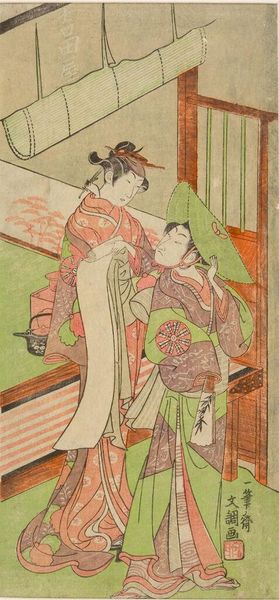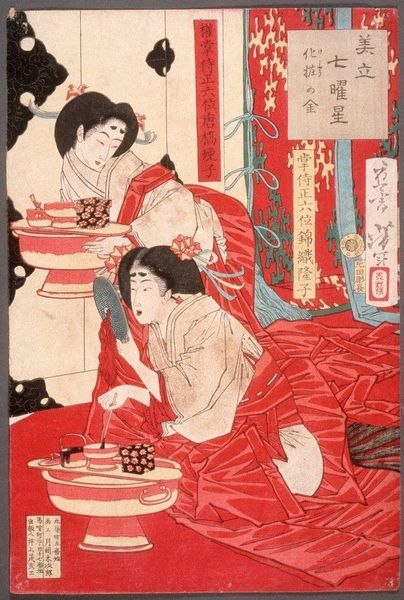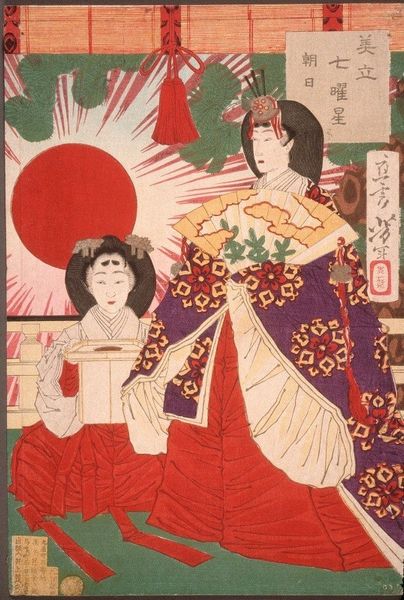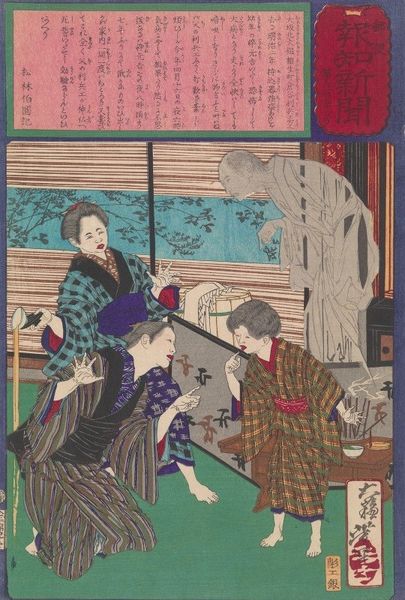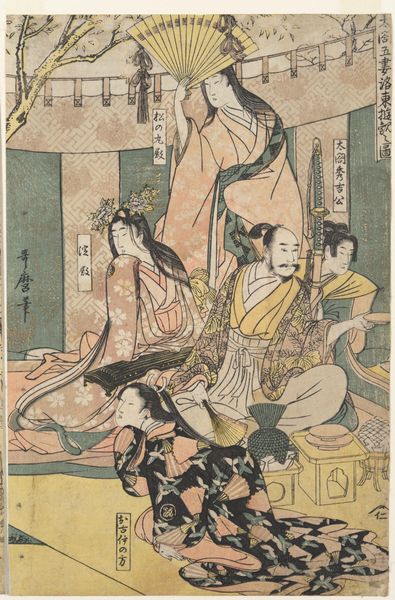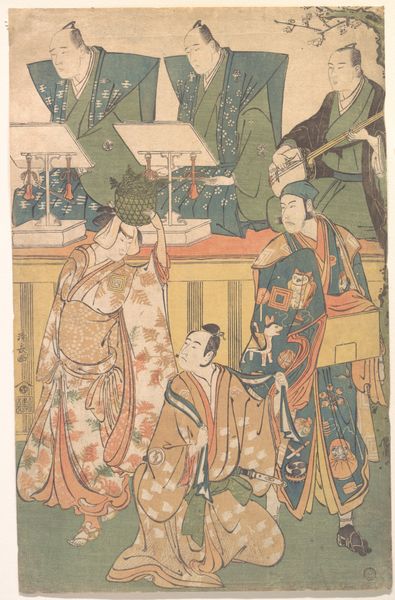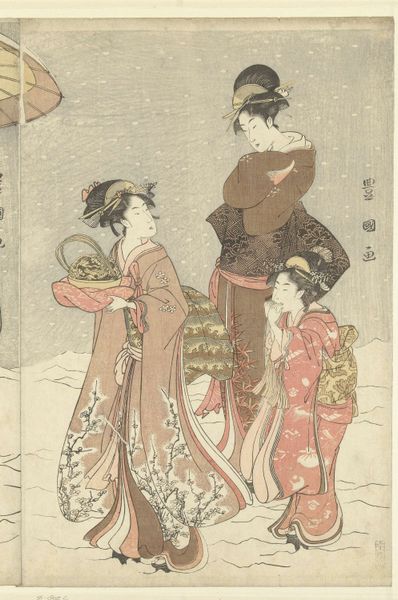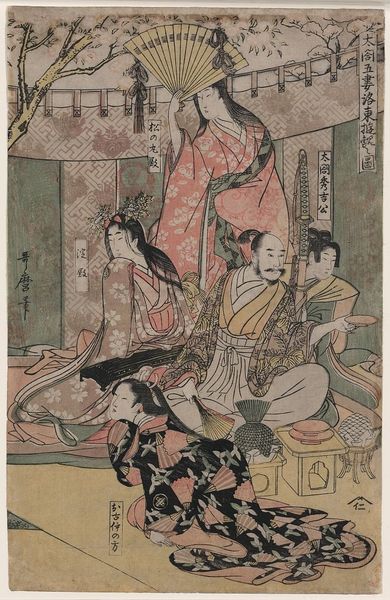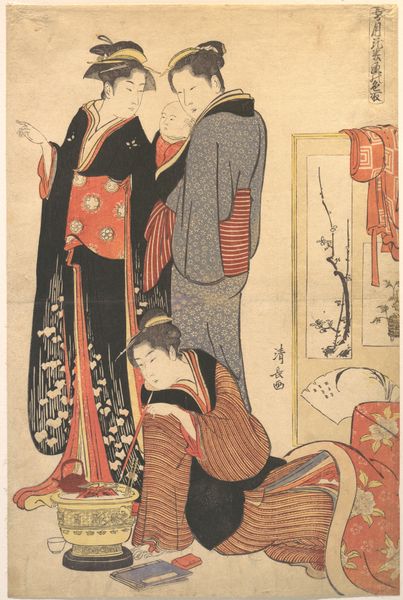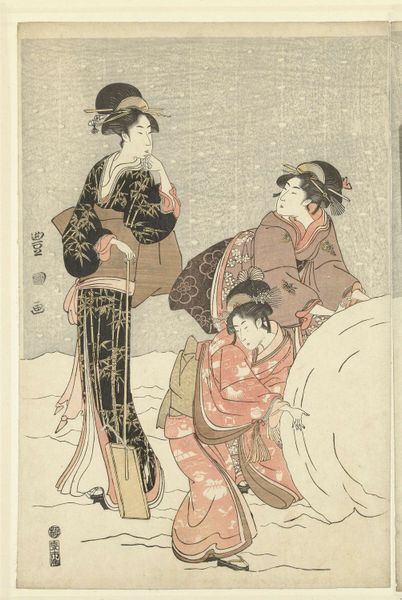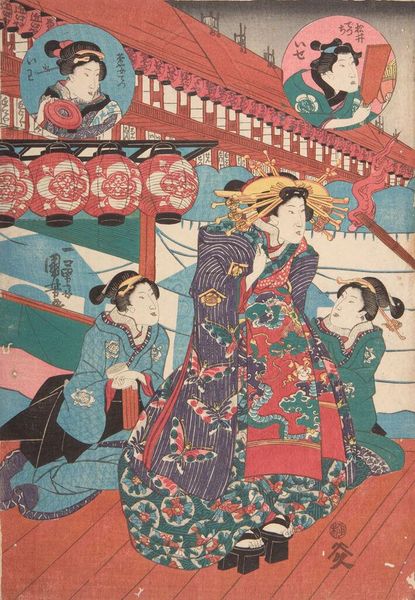
Copyright: Public Domain: Artvee
Editor: This is "Cascading Water" by Tsukioka Yoshitoshi, created in 1878. It's a woodblock print, showcasing the Ukiyo-e style. The overwhelming redness strikes me, it's so vibrant! What do you see in this piece beyond its aesthetic qualities? Curator: The intense redness, I think, demands we delve into the sociopolitical context. Remember, Ukiyo-e prints, while beautiful, often functioned as cultural commentaries. Here, the vibrancy could be interpreted as a deliberate artistic choice to underscore the complex social lives of the women depicted. The figures here suggest ladies of the court – note their clothing and styling. Yoshitoshi situates these women against a backdrop that may portray confinement or performance of identity. Does that resonate with your understanding of the period? Editor: It does! The vivid colors definitely force you to look closer, and considering their social standing really emphasizes their restricted roles despite their elevated status. Curator: Exactly. We can read the print as a silent dialogue on power, beauty, and the performative aspects of female identity within a rigid social hierarchy. What does the composition, particularly the relationship between the figures and the waterfall background, suggest to you? Editor: Perhaps the waterfall symbolizes both the freedom they lack and the overwhelming nature of their responsibilities? I initially focused on just the aesthetics but I hadn't deeply considered the symbolic interplay and societal critiques you've pointed out. Curator: These prints allow us a glimpse, even a critical understanding, into a particular lived moment. Remembering these as artistic records of society really unlocks Ukiyo-e's broader significance. Editor: Absolutely, reframing my perspective makes "Cascading Water" less of a passive observation of beauty, and more of a complex historical reflection on identity, restriction and, frankly, survival. Thank you.
Comments
No comments
Be the first to comment and join the conversation on the ultimate creative platform.
